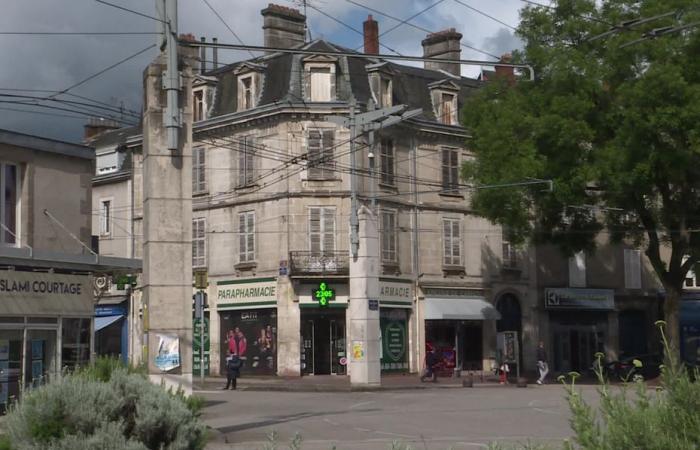Rehabilitating beautiful stone: for several years, the social landlord Limoges Habitat has been acquiring old buildings to transform them into social housing. The operation is twofold: save the architectural heritage in danger and attract new customers to social housing.
From the outside, it’s hard to imagine that the elegant bourgeois house located at 44 avenue Émile Labussière in Limoges houses… a home for young workers. Former property of the De Villepi family, it was left to abandoned for half a century, before being bought by Limoges Habitat in 2020 and renovated from top to bottom: ten comfortable studios and several spacious common rooms.
Work-study student, Carmel has lived here for three months and feels very good here: “At first, it was a bit of a ‘wow’… Not to mention that I have a beautiful exterior and that I will be able to enjoy it during the summer. For a young student, that’s really a plus. “
A few meters away, the vast Haussmannian building overlooking Place Carnot is also preparing to recover its former splendor. “We have managed to keep everything that makes the charm of Haussmann style”explains Frédéric Martinet, architect in charge of the rehabilitation project. “All the doors are preserved, the woodwork, the parquet floors, the moldings… For example, this room, it was obvious that it was a living room: the large corner room with a view of Place Carnot , very nice light because we are south-west. All the apartments are through, which for example on new buildings, is very rare.
Eight high-end apartments and an emphasis on the thermal renovation of the building. From G, its energy label should move to C.
Based in La Rochelle, Frédéric Martinet makes no difference between social housing and a villa on the Île de Ré: “Social housing, private housing, luxury housing… For us, there is no difference. It’s just the cost of the material that changes… We’re not going to put marble, but we have to granite everywhere. Look at the olive handles which are extremely beautiful, we’re going to keep them.”
According to the La Rochelle architect, social housing tenants are more demanding than in the private sector: “There is a good indicator for a social landlord: it is turnover. If a tenant is not happy, the rental management knows it straight away. In our operations, we have no turnover. over.”
Cost of the work: more than a million euros. Not profitable enough for private developers who did not rush into the project. Catherine Mauguien-Sicard, president of Limoges Habitat and vice-president of Limoges Métropole in charge of housing, fell in love with this building and could not bring herself to see it threatened with ruin: “I found that we still had jewelry, and that to fight against vacancy, communities needed to be able to appropriate these properties, rehabilitate them and put them back on the market.”
We are a real strike force: our tenants’ rents are reinvested in these acquisition-improvement projects.
Catherine Mauguien-Sicard, president of Limoges Habitat
For the public housing office,The operation is twofold: saving the architectural heritage in danger and changing the image of the Carnot district: “It is not because this building will be transformed into social rental housing that we will necessarily have very fragile populations like the neighborhood… Today, 70% of the French population can benefit from housing social”, concludes the chosen one.






